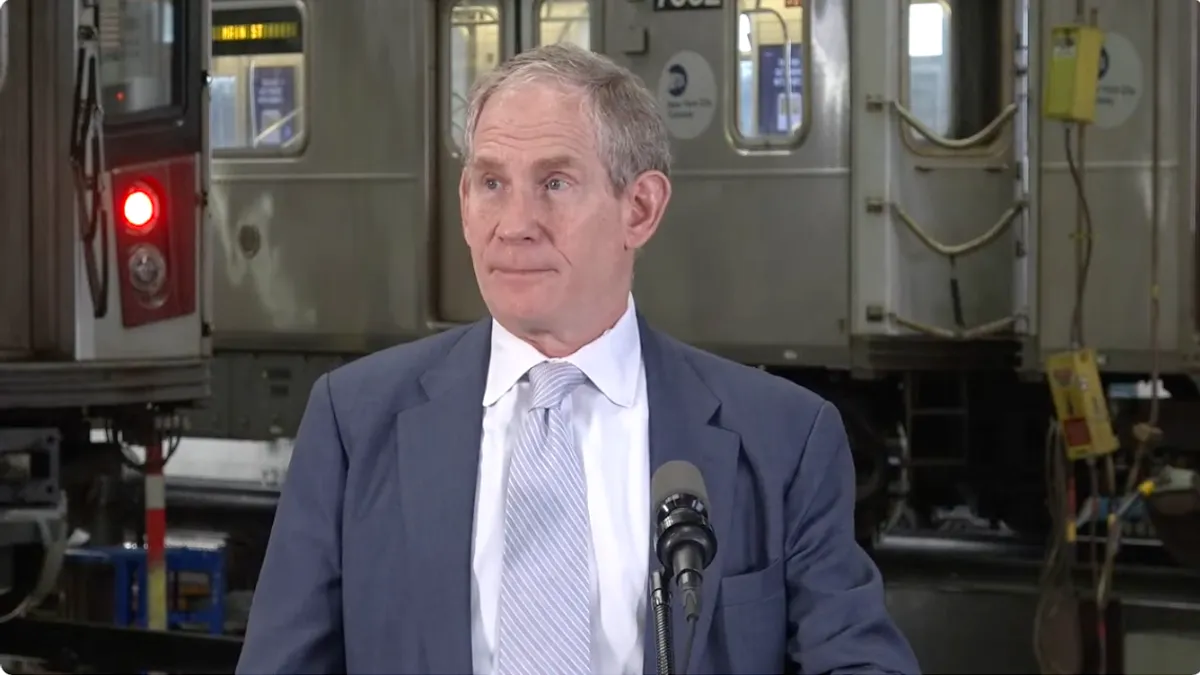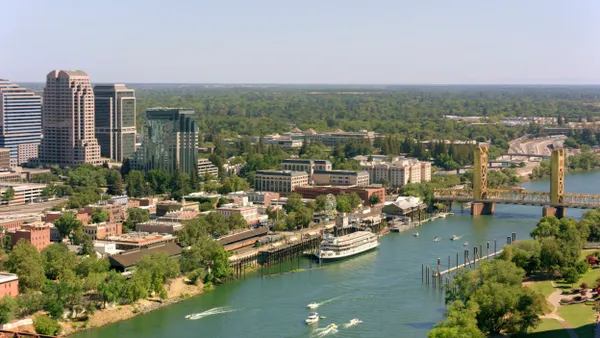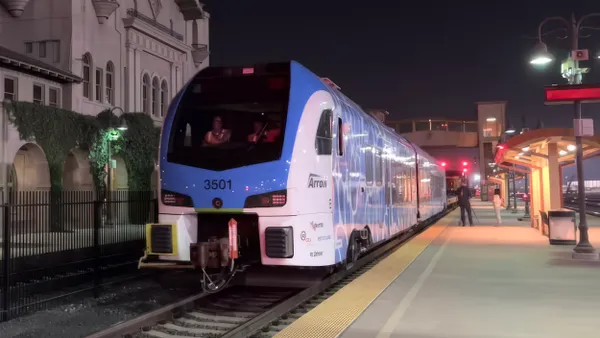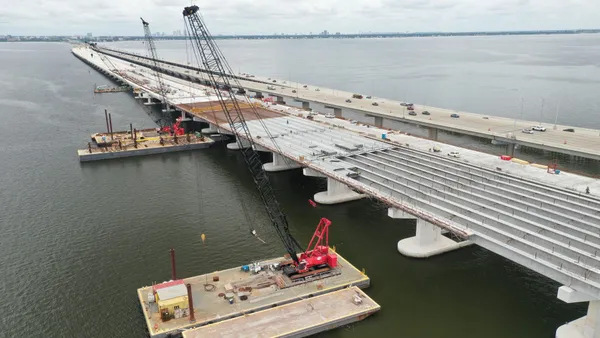Dive Brief:
- The New York Metropolitan Transportation Authority has proposed a $68.4 billion capital investment plan for 2025 through 2029, even as the agency’s ability to fund its current plan has been in doubt since New York Gov. Kathy Hochul halted the state’s congestion pricing plan for Manhattan.
- The new plan includes record-level investment in rebuilding and improving the commuter rail and transit system, according to the MTA, and it assumes that the current plan is fully funded. However, the New York State comptroller said in a Sept. 12 report that the MTA “must find billions in new funds” to cover the loss of congestion pricing revenue and the cost of its next five-year capital program.
- “We have to propose a capital plan that will serve New Yorkers,” MTA CEO and Chair Janno Lieber said at a Sept. 18 press conference, adding that state legislators are the ones that have to “resolve how to fund that capital program.”
Dive Insight:
The New York MTA is the nation’s largest transit agency, according to the American Public Transportation Association. In the fourth quarter of 2023, it averaged more than 5.5 million weekday riders across its subway system, buses, paratransit and commuter rail lines.
Such a large transit system needs large investments, Lieber said in the press conference. “We get that $68 billion is a big number, but I'm confident that it is the right number. Don't forget what we’re talking about with our mass transit system in the region is an asset that is worth one and a half trillion dollars.”
The MTA’s capital investment proposal sets aside $47.8 billion for the New York City transit system, buses and Staten Island Railway. That includes purchasing 1,500 new subway cars, 500 zero-emission buses and making more subway stations accessible per the Americans with Disabilities Act.
About $6 billion each would go to the Long Island Rail Road and Metro-North Railroad for new rail cars, station accessibility and other infrastructure repairs. More than $5 billion is planned for major projects and system expansion, such as the proposed Interborough Express rapid transit line in the Brooklyn and Queens boroughs.
The MTA’s capital programs are typically funded through a mix of city, state and federal sources, with the agency contributing directly through bonds and other capital. Lieber said he has already begun working with the governor’s team on the upcoming capital plan. “I know that she understands the importance of what we're trying to do here because the success of our transit system is totally intertwined with the success and affordability of the city and the region,” Lieber said.
Transit advocates are still criticizing Hochul’s funding decisions, however. “New Yorkers need more investment than Governor Hochul proposed if we want a fair and sustainable transit system,” said Riders Alliance Policy and Communications Director Danny Pearlstein in a statement.











